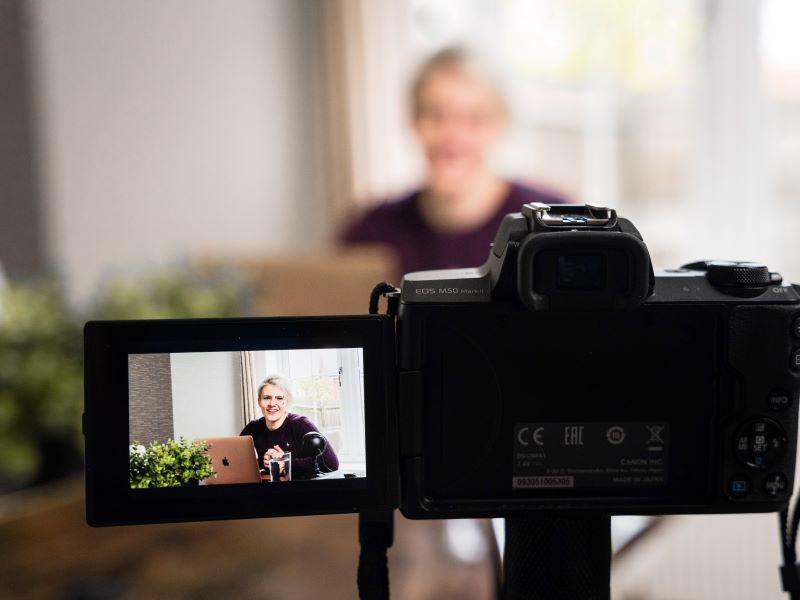
Make yourself presentable
Too often at university, presentation skills are assessed but never taught. This is despite “skilled communicator” being among our core graduate attributes. Giving a presentation will probably be unavoidable for most graduates; it might be part of the recruitment process itself for their first graduate job.
Practise, practise, practise
You learn how to give a good presentation by repeatedly giving presentations. Students must present, get feedback and implement that feedback. Repeatedly.
We have embedded presentations into a compulsory third-year undergraduate mathematics course. There are 140 students and just 24 hours of total contact time. How do 140 students deliver repeated presentations and receive useful feedback in 24 hours?
Socially non-distanced: face-to-face presenting skills
Find the biggest and best-equipped workshop room that you can. We are lucky to have one with pre-Covid capacity for more than 70 students, sitting in groups of eight at tables with whiteboards and display screens. Students arrive having prepared a two-minute presentation on a topic from the course.
Round one
Students deliver presentations to their groups, in parallel, all around the room. They use whatever technology they like: Powerpoint, Beamer, Prezi, pen and whiteboard. Some use nothing. We even see the occasional prop. Half the groups have a tutor, half do not. Each presentation is marked by a tutor, if present, or their peers. Immediate feedback is given in either case.
Round two
Eight two-minute presentations, with feedback and changeovers, take about half an hour. Once the first round is completed, do exactly the same thing again. Students change whatever they like in response to feedback and having observed their peers’ presentations. Tutors swap groups, so each group switches from tutor or peer assessment to the other.
So in each session, a student delivers a presentation not once but twice, gains feedback both from a tutor and from their peers, and marks their peers’ presentations.
Warning: support your tutors!
Workshops are intense and the demands on tutors unique: delivering immediate but tactful feedback to students in front of their peers. Our tutors are mainly from the “teaching stream” of our graduate school; it is an excellent opportunity for them to develop and reflect on their own presenting and teaching skills.
Making it Covid safe
Lots of students crammed into a room, huddled around tables, getting up and down, talking animatedly at each other, plugging and unplugging laptops, handing board pens around. This is not exactly Covid-secure.
Socially distanced: digital presenting skills
Covid not only undermined the delivery of the course but changed the required outcomes. Making eye contact and writing legibly on a whiteboard are not such valuable skills in the world of Zoom. Today’s presenters need to write simple and effective slides, to screen-share and to engage people who can just press mute or leave the room. For 2020 to 2021 the course was redeveloped for digital delivery by reader in mathematics Ben Goddard, with 200 students enrolled.
Round one
Students record a two-minute video – MS Teams or Zoom work fine for this – and upload to their MS Teams group channel. Over the next week, students conduct peer assessment, and now self-assessment, of these videos, submitting feedback to tutors through MS Office Forms.
Round two
In a live MS Teams workshop, tutors summarise and lead discussion on the feedback. Students then deliver a live version of the same presentation, incorporating this feedback.
Practice: commonalities
Cycle these sessions every two weeks, updating the presentation topics to follow the wider course material. Rotate tutors around groups each time, so students hear different perspectives.
Over an 11-week semester, each student delivers at least 10 short technical presentations, getting a variety of feedback after every one, and incorporating that feedback into the next delivery. Students get practice, practice, practice.
We end with a five-minute presentation, more like a classic high-stakes, one-off presentation. In a citation for a university teaching award, one student said:
“If someone would have told me in week one that I would give a five-minute presentation in week 10 to a group of other students and two tutors, I would not have believed them. But I did and the confidence to get up and do that was mainly down to our lecturer Richard and the way he organised his skills section of the course.”
This is exactly the outcome we want.
Richard Gratwick is a lecturer in mathematics at the University of Edinburgh.
Additional Links
This advice is based on the Teaching Matters blog post: Teaching presentation skills and engaging students in large lectures




